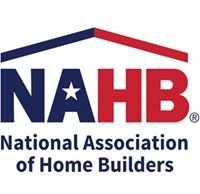WASHINGTON, D.C. – April 23, 2013 – (RealEstateRama) — The National Association of Home Builders (NAHB) recognizes the 43rd anniversary of Earth Day, along with millions of people worldwide. Just as the Earth Day movement has grown and advanced over the years, so too has the home building industry. In many respects, what was once considered “green building” has become more commonplace and regularly incorporated into today’s new homes.
“Many building practices that were considered green just 20 years ago are now standard for a lot of home builders,” said Matt Belcher, co-chair of NAHB’s Energy & Green Building Subcommittee and a builder from Wildwood, Mo. “As consumers and the green movement have evolved through the years, it has been important for the home building industry to evolve as well.”
Energy codes prescribing specific requirements for insulation in walls, floors, ceilings and windows, and the proliferation of above-code energy programs are examples of this change. Both were non-existent until the late 1970s. Now, energy codes and above-code programs are commonplace and often extend focus beyond just insulation amounts to include whole building tightness testing, lighting, duct testing and more.
Meanwhile, toilets manufactured before 1992 often used over three gallons of water with every flush. Today, however, new toilets such as those carrying a WaterSense label reduce the amount of water used by 20 to 60 percent — which can save nearly 13,000 gallons of water in a home every year. According to the Environmental Protection Agency, that can translate to a savings of more than $110 per year in water costs and $2,200 over the lifetime of the toilet for the average family.
The growth of renewable energy in the residential sector is another visible example of the trend toward greener building. It took decades for solar panels to be embraced fully, and now they can be found on single-family homes and multifamily dwellings across the country.
A 2011 survey of NAHB members predicts that green homes, which comprised as little as 2 percent of the overall market as recently as 2005, could represent as much as 38 percent of it by 2016. It was this type of market-scale change that prompted NAHB to champion the development of the ICC 700 National Green Building Standard (NGBS), the only residential green building approved by the American National Standards Institute (ANSI) and the foremost green rating system for single-family, multifamily and remodeled homes in the United States.
The latest version of that standard, the 2012 NGBS, was published earlier this year to reflect changes in updated building codes, building practices and home technologies. Among the many revisions were changes to the energy component that could result in as much as a 15 percent increase in energy efficiency and an increase in water efficiency across all four performance levels (bronze, silver, gold and emerald). Substantive changes are also found in the land development, material resource, indoor environment and owner education and maintenance sections. Finally, a major overhaul of the remodeling component was conducted to make the NGBS easier to apply for small and large remodeling projects to facilitate improving the environmental performance of older homes.
For more information on green building and the 2012 NGBS, please visit www.nahbgreen.org.







